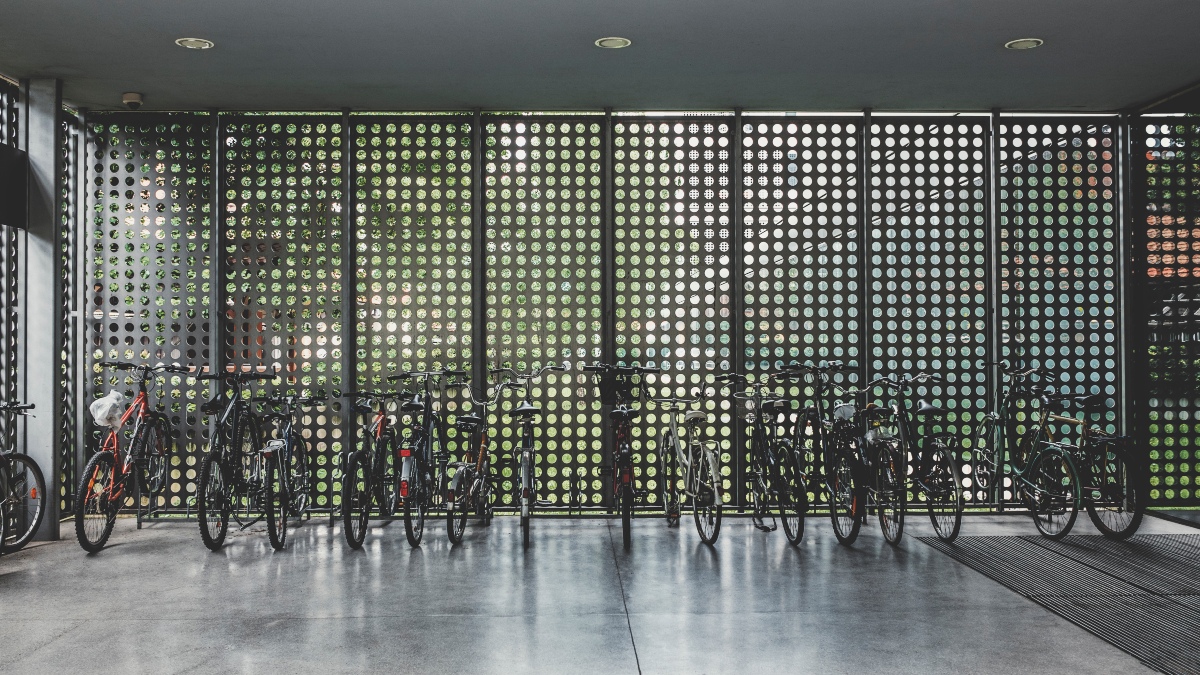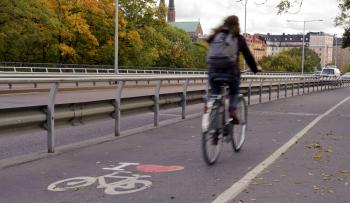
ECF analysis: Mandatory bicycle parking in the Energy Performance of Buildings Directive is great news for cyclists
All new and renovated residential and non-residential buildings must provide spaces for bicycle parking, according to a new revision proposal for the Energy Performance of Buildings Directive published by the European Commission.
On 15 December, the European Commission presented a revision proposal for the Energy Performance of Buildings Directive (EPBD), for which the European Cyclists’ Federation (ECF) has long advocated the inclusion of provisions for bicycle parking spaces.
The original Energy Performance of Buildings Directive in 2010 was adopted into EU policy without any mobility provisions. Revised in 2018 for the first time, the European Commission introduced several minimum requirements on charging infrastructure for electric cars. However, cycling received only one mention in a recital. Now, with the second revision starting just three years later as part of the “Fit for 55” package, the Commission has extended the mobility scope beyond e-cars by including requirements in support of cycling.
ECF recommendations
In the build-up to the publication of the EPBD revision proposal, ECF recommended that the Commission introduce minimum requirements for bicycle parking. This included the suggestion that new and renovated residential buildings have at least 1.5 – 2 bicycle-parking spots per residential unit and that 10% of these bicycle-parking spots be reserved for bikes with larger dimensions (such as cargo bikes, long tails, tricycles, etc).
ECF also recommended that for new and renovated non-residential buildings there should be bicycle-parking spots for at least 15% of employees and/or customers.
Other recommendations included introducing minimum requirements for electric-bicycle charging infrastructure in new and renovated residential and non-residential buildings (wherein at least one in ten bicycle parking spots should be equipped with an e-bike charging point) and to improve the social, environmental and mobility performance of buildings by better regulating requirements for car parking.
The Commission’s proposal: Key takeaways
The key takeaways from the Commission’s latest revision proposal include a number of minimum requirements for bicycle parking which are positive developments in terms of fostering more cycling:
- At least two bicycle-parking spaces “for every dwelling” in new and renovated residential buildings with more than three car-parking spaces.
- At least one bicycle-parking space for every car-parking space in new and renovated non-residential buildings with more than five car-parking spaces.
- At least one bicycle-parking space for every car-parking space in all existing non-residential buildings with more than 20 car-parking spaces by 2027.
This is very good news indeed and a significant improvement on the previous version of the Directive. But our analysis also reveals two main caveats:
- In the Commission proposal these rules would only apply to buildings “where the car park is physically adjacent to the building” and not to buildings where the car park is located inside the building. We do not understand yet the reason behind this limitation and will ask the Commission for clarification on this element.
- The proposal also includes some get-out clauses for member states:
a. On non-residential buildings: “Member States may adjust requirements for the number of bicycle parking spaces […] for specific categories of non-residential buildings where bicycles are typically less used as a means of transport.” ECF’s view is that this leaves a lot of room for member states to not introduce minimum parking requirements.
b. On renovated residential buildings: “Where in the case of major renovation, ensuring two bicycle parking spaces for every dwelling is not feasible, Member States shall ensure as many bicycle parking spaces as appropriate.” Fortunately, there is no such provision for new buildings.
In addition to the parking provisions, the Commission also calls for EU member states more generally “to ensure the coherence of policies for buildings, soft and green mobility, and urban planning.” This, again, is a very general rule and can be interpreted very differently by member states. One possible interpretation that ECF will push for is to manage car-parking requirements in building codes, such as by substituting minimum car-parking norms by maximum norms, in particular in urban centres.
What next?
In summary, the proposal of the European Commission is a major step into the right direction. From a simple reference in a recital in the current Directive it was elevated into the main legislative part of the proposal. Introducing provisions on bicycle parking was identified by ECF as the main element to push for and the Commission followed that approach. But major challenges remain. The cherry on top would have been to introduce minimum requirements for e-bike charging.
Next, the proposal will go to the European Parliament and to the Council of the EU, who will look over this proposal in 2022. ECF will continue to follow the process in order to further improve the provisions on bicycle parking. In addition we will continue to promote the inclusion of minimum requirements for e-bike charging.
Regions:
News category:
Contact the author
Recent news!
Upcoming events
Contact Us
Avenue des Arts, 7-8
Postal address: Rue de la Charité, 22
1210 Brussels, Belgium









